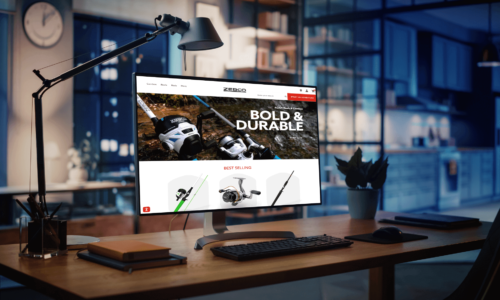W e all know that online shopping has been on an upward trajectory for years, steadily eclipsing in-store shopping due to the advent of new technologies and evolving customer expectations. Now COVID-19 has accelerated even further changes in the industry and, in the midst of shutdowns and in-person restrictions, online shopping has quickly become the lifeblood of commerce.
We all know that online shopping has been on an upward trajectory for years, steadily eclipsing in-store shopping due to the advent of new technologies and evolving customer expectations. Now COVID-19 has accelerated even further changes in the industry and, in the midst of shutdowns and in-person restrictions, online shopping has quickly become the lifeblood of commerce.
Consider the following. According to Adobe Digital Economy Index 2020, there’s been:
- 25% increase in US eCommerce daily sales
- 20% increase in digital purchasing
- 40% increase in average daily sales of computers and monitors
To answer the needs of your customers in this “new normal,” digital transformation and improved customer experiences have to be at the forefront, regardless of industry. And while these changes are usually fueled by technologies, often times answers to our online problems can be found within our brick and mortar stores.
So even though physical stores may be operating at a limited capacity or not at all right now, there is still the opportunity to take the tactile, human experience of shopping in a store and translate it online. But how? How can we ensure things like customer service, finding the right fit and tracking when and how users shop are not lost in an eCommerce environment?
Recently, I attended the virtual Retail Innovation Conference where there were discussions about this topic. The following are a few valuable takeaways I learned at the conference including what in-store retail has done right and how we can borrow those strategies to gain successes online.
Make it Easy to Find Help
When a customer is confused or can’t find what they need, help should be easy to find. In a physical store, customers oftentimes seek out an employee, only to have to wait in line at the checkout or customer service desk to ask a question.
The Vitamin Shoppe understood this pain point, and using customer feedback and data, they decided to completely overhaul their store design. First, they removed the physical barrier between the checkout counter, bringing their staff on the floor. This made their associates much more accessible to the customers. Second, they changed their POS system and started using iPads so that staff could search inventory and check customers out quickly and on the spot. The result has been higher conversions and better customer satisfaction.

When a user is looking for help in an eCommerce store, we can take similar measures. It’s obvious that search needs to be easily accessible for users to assist themselves in product discovery, but the chat feature is another important solution…at least, in theory. A study by Baymard indicated that live chat can be highly disruptive to a user’s product finding journey. The study found that users prefer to seek out live chat themselves, rather than having chat served up in a popup or notification that’s not prompted by the user. So just like The Vitamin Shoppe, it’s important to have help easily accessible, but not have it get in the way of a customer converting.
Here’s the do’s and don’ts of implementing chat on your website:
Don’t
- Include chat as a popup (especially on mobile)
- Automatically expand a sticky chat window without a user prompt
- Include sticky chat on mobile (as it overlaps important content)

Do:
- Include chat in direct links within the help section of a site
- Include a chat link in the header
- Include a chat link in the footer, as many users will expect to find it there
- Ensure live chat is properly staffed so users don’t have to wait

So yes – we can strive to replicate the same customer service online as we’d receive in a store, but it’s important to take measures to ensure we’re enhancing the user experience, not distracting from it. Using data and feedback, you can better understand how your customers prefer to receive their assistance and avoid negatively affecting their shopping experience.
Digitize Measurement to Reduce Returns
One of the biggest issues customers face when shopping online is trusting what’s presented digitally is what they’ll receive on their doorstep. For example, a pain point for clothing retailers online is ensuring the right fit. Sizes run differently based on brand, and it’s frustrating to have to order something only to have to figure out how to return it immediately after getting it. It’s annoying to the user, bad for the environment, and bad for your bottom line.
A possible solution? A self-service contactless body measuring app that enables a simple way to digitize measurement capture so that made-to-measure businesses can easily operate online. 3dlook helps you quickly and accurately measure your customers’ size and fit. Its software eliminates the guesswork of finding the right size by creating a 3D body model of a user’s body.

The app is simple:
- Upload two photos
- Create your unique 3d Model
- Try on products and visualize how things will look on you
- Engage with your avatar in augmented reality
3dlook represents the next generation of apparel shopping by reimaging the in-store fitting room experience through a reliable digital solution and in turn, eliminating the guesswork, returns and frustration from the online buying process. Similar tactics and technologies can be used in other verticals, such as furniture and beauty, so that customers can feel more confident in their purchases and trust what they’re buying is what they’ll receive.
Engage with Your Users in Micro-Moments that Matter
Understanding your customers’ shopping behaviors and patterns is crucial to creating better shopping experiences, both online and in-store. Sometimes this data is easier to capture online, but it’s also important to understand for your in-store customers, which can then translate into online sales.
For example, The Vitamin Shoppe noticed two key things about their in-store customers: their shopping habits correlated directly with the peak hours of nearby gyms and when customers were in store shopping, they were usually on the go. Knowing this, they updated their store hours in conjunction with gym opening and closing times and also added fridges stocked with energy drinks and snacks near checkout.
Using The Vitamin Shoppe’s fridge as an analogy, online stores can include upsells, cross-sells, add-ons, and bundles on product detail pages and shopping carts to entice “on-the-go” users. This will increase your average transaction size and boost your customer lifetime value, ultimately leading to more sales.
In addition, Google Analytics can help you identify the locations of users with high conversion or transaction rates. You can use this information to target ads to your most profitable areas, like offering a discount for 25% off multiple items, or to less profitable areas by offering free samples or shipping with a purchase to get users to engage and convert.
Anagog is another great solution. Their ground-breaking EdgeAI technology can help you create accurate personalization based on your customers’ real-world daily journey. You can look at a customer’s daily timeline and identify the best times for user engagement.

Again, this allows you to target ads based on user behavior and predict what your user may want and when before they even realize it. This kind of hyper-personalization increases the odds of an impulse-buy and will increase conversions and create customer loyalty.
Create a Beautiful Space
Whether you’re shopping online or off, aesthetics matter. The Vitamin Shoppe recently elevated their shopping experience by completely overhauling their interior design. The design features a warm palette with wood flooring and HGTV inspired fixtures like Edison bulb lighting, brass signage and leather trim. The design is simple, yet modern. They also included a new wayfinding system to streamline the shopping experience. The result? Once again, higher customer satisfaction and increased conversions. I mean, who wouldn’t want to shop here?

Likewise, good web design creates meaningful first impressions. Your design’s main purpose should be to solve your user’s problems and boost your brand’s credibility. Studies show that first impressions are 94% design related, and can be the difference between making lasting impressions or losing users for good.

Using the example of The Vitamin Shoppe’s updated open concept, online design should: include whitespace strategically to create a buying progression, use less copy to cut down on visual noise, and apply modern design principles that users have begun to expect from top brands on the web.
Today, while more and more consumers want to buy online because it’s easy and safe, they also expect to have some of the same rewarding shopping experiences online as they would in-store. By focusing on customer service, identifying key micro-moments of user behavior, and implementing new technologies, you can stay ahead of your customer expectations, increasing conversions and building loyalty.



